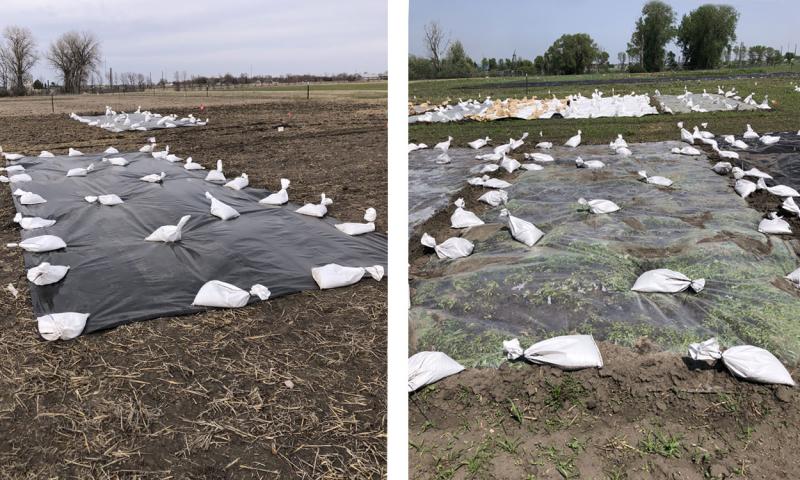
Written by Hannah Voye, SDSU Department of Agronomy, Horticulture and Plant Science Graduate Research Assistant, under the direction and review of Rhoda Burrows, former Professor & SDSU Extension Horticulture Specialist; and Kristine Lang.
Soil tarping is a technique used to reduce weeds. The soil of a growing area is covered with silage tarps or greenhouse plastic before planting in the space.
Soil tarping not only can reduce weeds to prepare a growing area for planting, but it can also protect against early-season soil erosion, as well as impact temperature and moisture levels in a plot.
Sometimes soil tarping is used to terminate cover crops or grass areas as well. Two of the main soil tarping techniques used are occultation and solarization.
Occultation
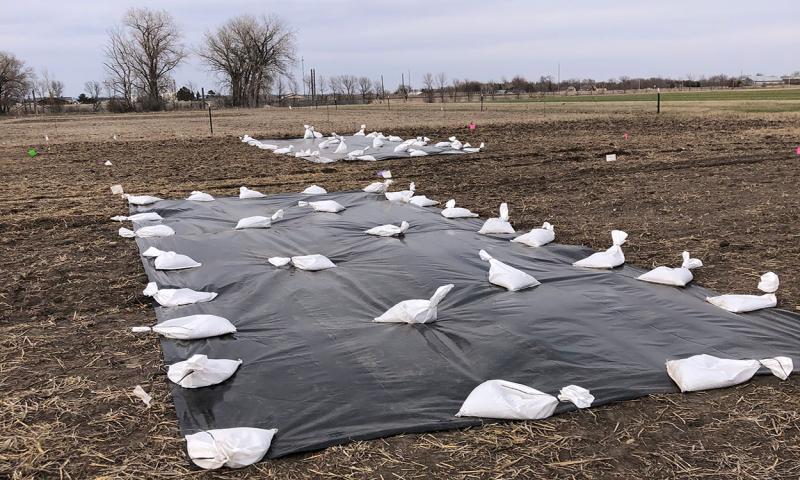
Occultation means to exclude light. Weed seeds need light to germinate. For this technique, a black silage tarp is laid over the soil with the goal of reducing the amount of light that reaches weed seeds, therefore, preventing weeds from germinating in the plot. Silage tarps used for this technique can be reused for multiple years. As shown in Figure 1, they can be secured with sandbags once applied to the soil. For occultation, it is very important to have good tarp-to-soil contact. This can be achieved better by irrigating the area before tarping and ensuring that the tarp is pulled tight and flat to the soil as they are being secured by sandbags and burying the edges.
Figure 2 shows a 6-week silage tarped area compared to a control plot that was not tarped in Figure 3. As you can see there are significantly less weeds in the tarped plot. While this technique is successful on annual weeds, some perennial weeds can still survive this tarping technique.
Tarped Plot
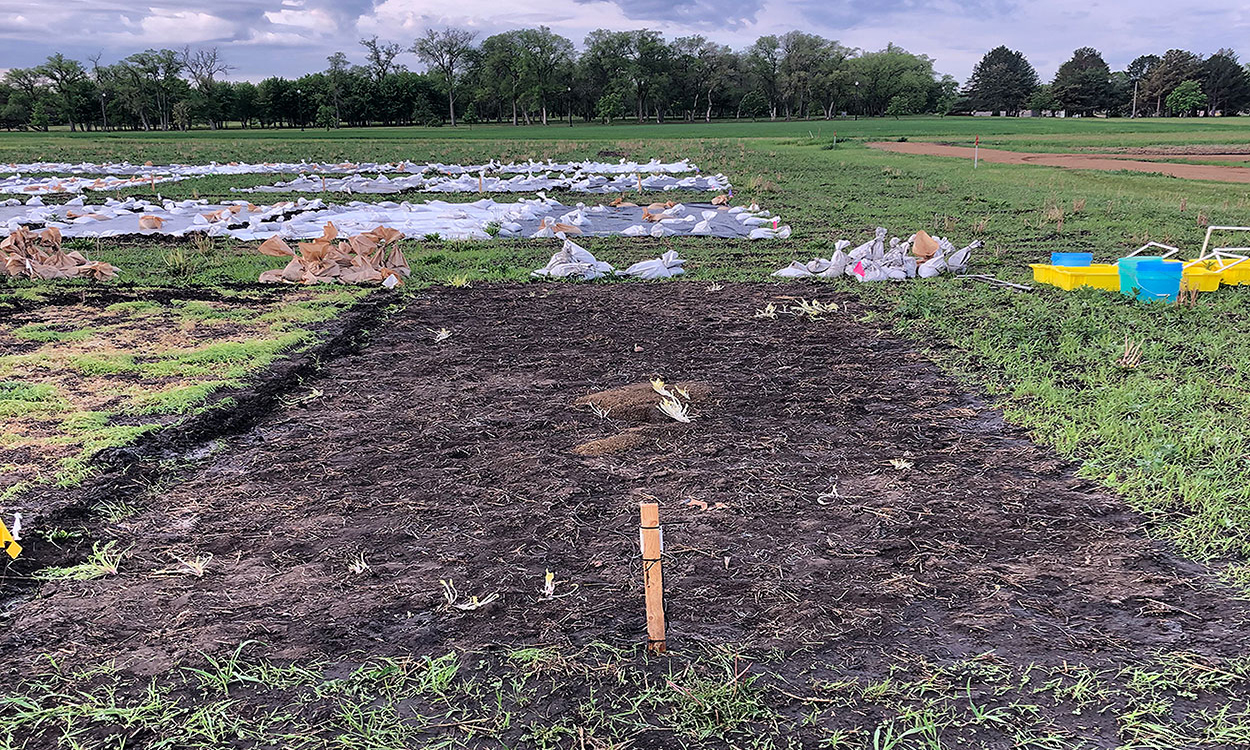
Control Plot
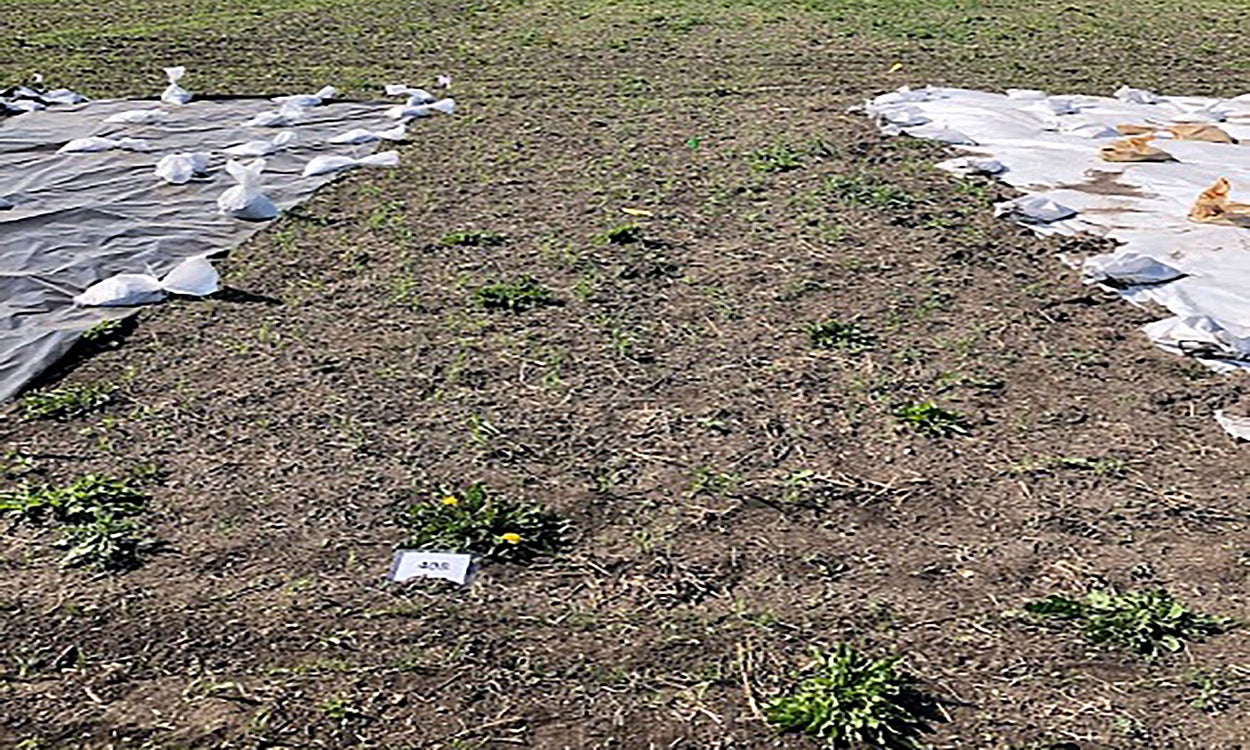
Solarization
The goal of the solarization tarping technique is to encourage weed seeds to grow, therefore depleting the weed seed bank of the tarped area before the growing season starts. Clear tarps with their edges buried in the soil are used to harness heat and light from the sun. This creates a greenhouse microclimate for weed seeds to germinate. As seen in Figure 4, many weeds can germinate beneath the clear tarp over a 6-week application.In warmer climates, temperatures beneath the clear tarp can become so high that the germinated weed seeds die from the extreme heat. In cooler climates, like South Dakota, temperatures in the spring under the tarp can become warm enough for the weed seeds to germinate and draw out the seedbank, but not extreme enough to kill off all germinated weeds. Figure 5 shows some weeds dying out and others surviving the clear-tarped treatment. When weeds are not completely terminated in the growing area, flame weeding or tillage can be used to clean out the area before planting.
Clear-Tarped Plot
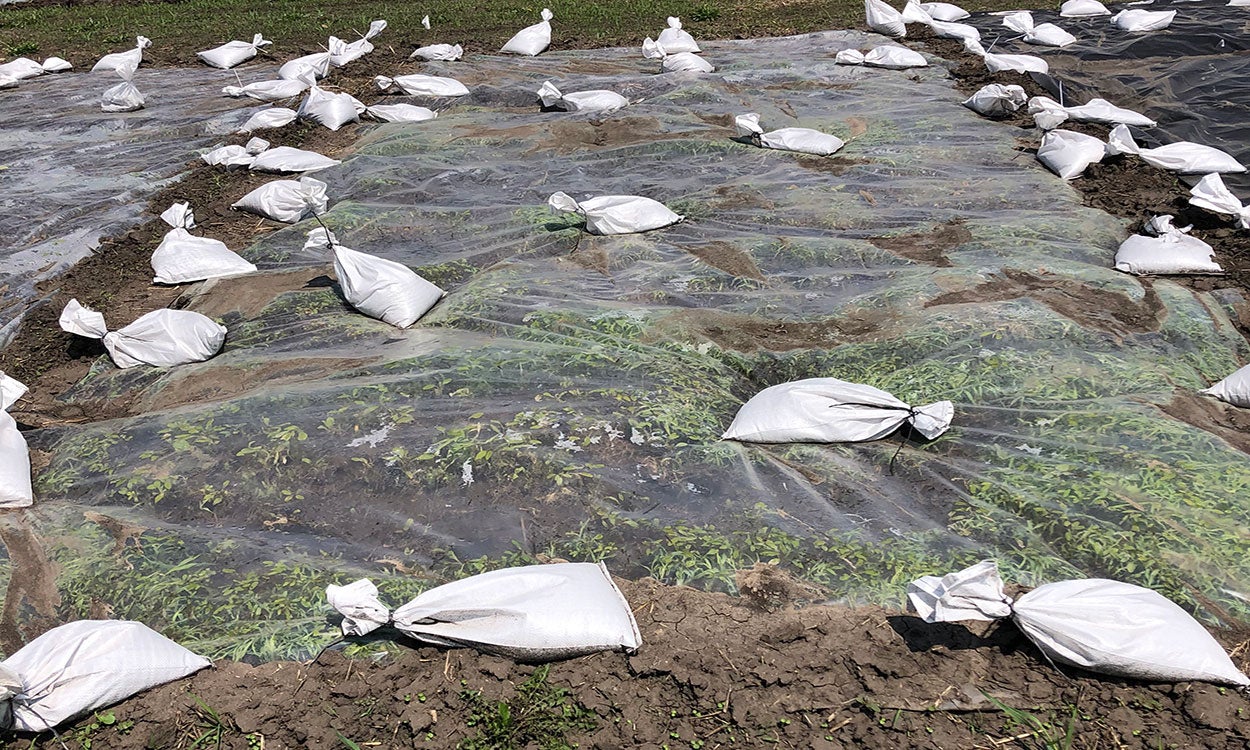
After Tarp Removal
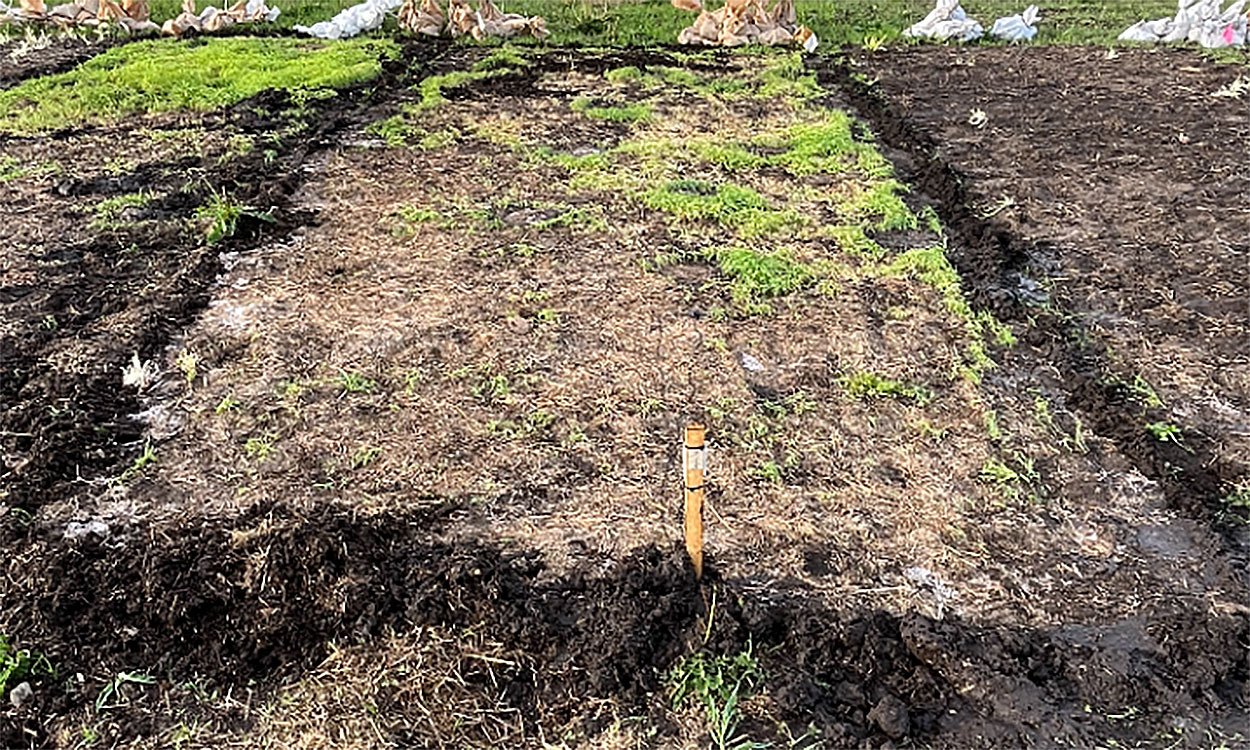
Tips for Soil Tarping
It is very important to secure tarps well, especially in high South Dakota winds. It is recommended by the University of Maine to space 10-to-15-pound sandbags on the edges 5 feet apart, and through the middle of the tarp 10 feet apart. For our soil tarping research at SDSU, we have used about 25 to 30 total 10-to-15-pound sandbags for a 10 by 24 foot tarp. We spaced sandbags about 3 feet apart across our tarps and zigzagged them about 4 feet apart through the middle of the tarp. Burying edges of tarps can reduce the number of sandbags used as well. Some farmers have been creative in how they secure their tarps by using makeshift weights they find around their farm, such as old tires, boards, and rocks.
References and Resources
- Bulletin #1075, Tarping in the Northeast: A Guide for Small Farms. The University of Maine.
- Solarization and Tarping for Weed Management on Organic Vegetable Farms in the Northeast USA. eOrganic.org.
- Tarping - Cornell Small Farms. Cornell University.


